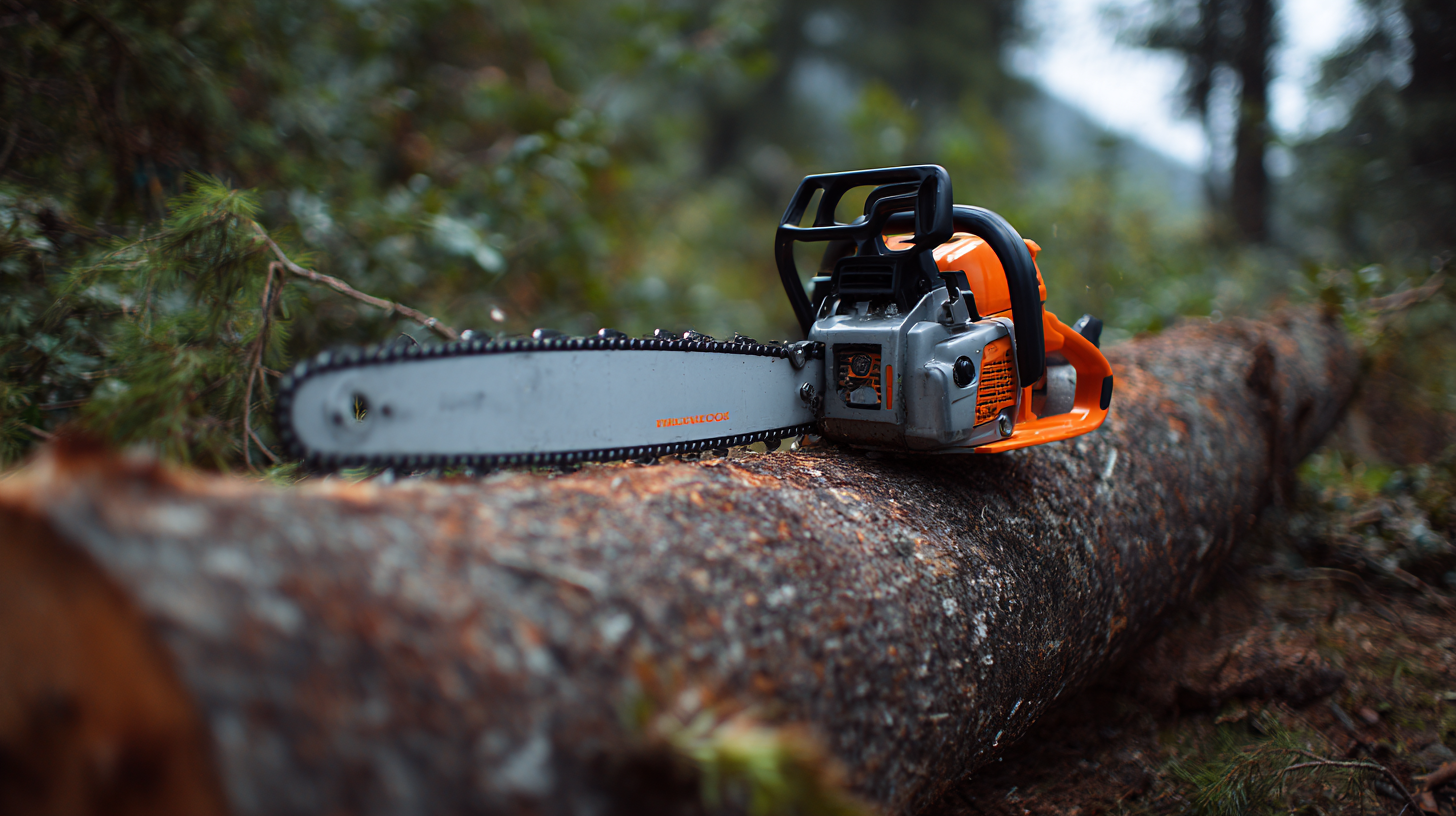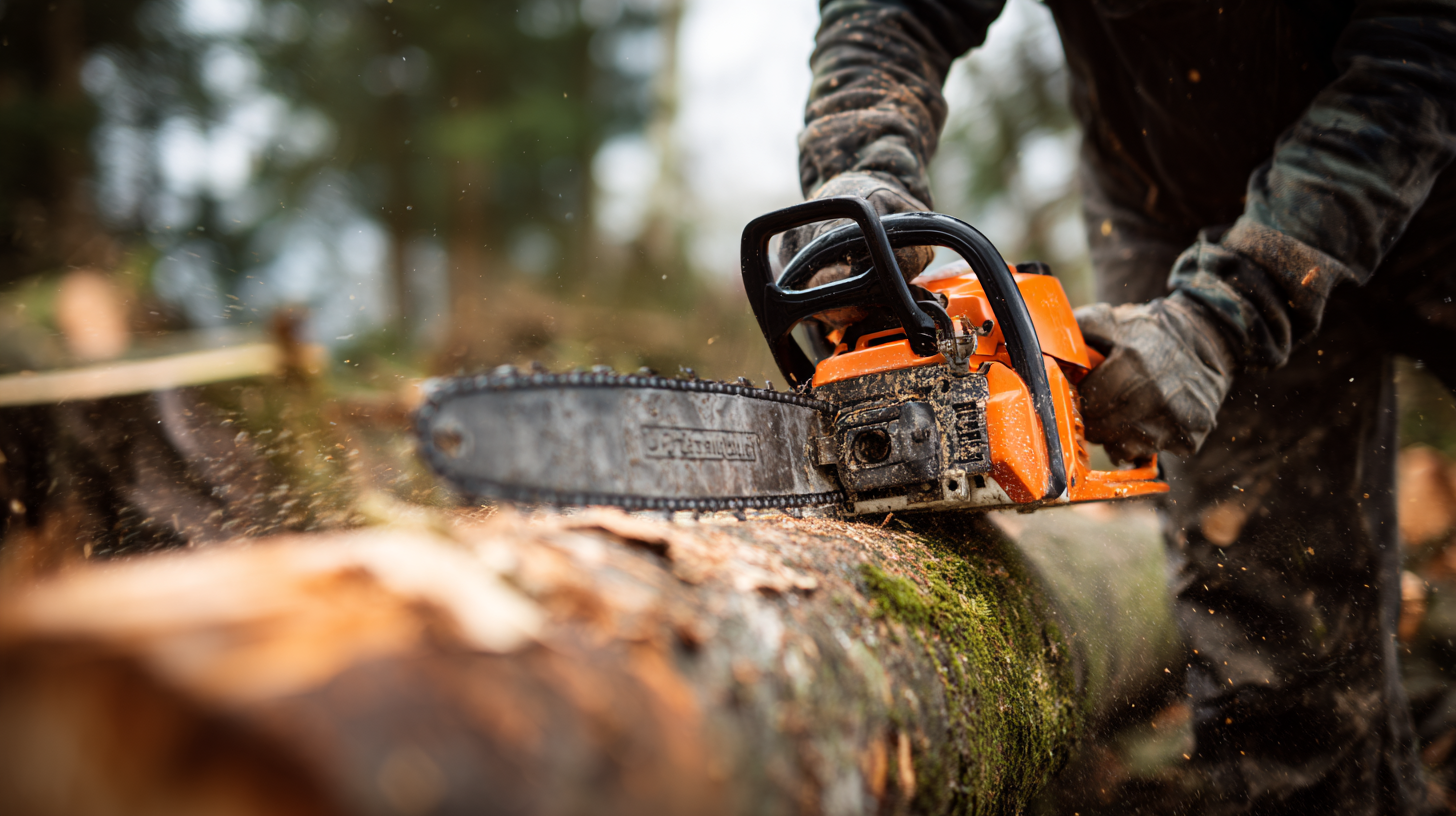Why Hand Held Chain Saws Are Revolutionizing Outdoor Cutting Tasks
In recent years, the advent of the Hand Held Chain Saw has transformed the way both professionals and DIY enthusiasts approach outdoor cutting tasks. This innovative tool combines the power and efficiency of traditional chain saws with the convenience and portability of handheld devices, making it an ideal solution for a variety of cutting projects, from pruning trees to tackling thick brush. With advancements in technology, these saws are now lighter, more ergonomic, and easier to operate, enabling users to handle demanding tasks with greater precision and less physical strain.

As we delve into the various methods of effectively using a Hand Held Chain Saw, we will explore the benefits that come with its versatile design, safety considerations to keep in mind, and tips for maximizing performance in your outdoor cutting endeavors.
The Evolution of Outdoor Cutting Tools
The evolution of outdoor cutting tools has dramatically transformed how we approach landscaping and forestry tasks. Historically, cutting implements ranged from simple hand tools to bulky gas-powered saws, often requiring significant physical effort and expertise. However, advancements in technology have led to the development of hand-held chain saws, which combine power and portability, making outdoor cutting tasks more accessible for everyday users.
One of the significant advantages of these modern chain saws is their lightweight design, allowing for more controlled operation and less user fatigue. This evolution encourages not only professional landscapers but also hobbyists to engage in outdoor cutting activities with confidence. When selecting a hand-held chain saw, consider opting for models with adjustable features that can be tailored to specific tasks, ensuring both efficiency and safety.
Tip: Always prioritize safety by wearing appropriate gear, such as gloves and protective eyewear, when using a chain saw. Additionally, maintain your equipment regularly to ensure optimal performance and longevity, which will enhance your overall outdoor cutting experience.
Why Hand Held Chain Saws Are Revolutionizing Outdoor Cutting Tasks - The Evolution of Outdoor Cutting Tools
| Feature | Traditional Chainsaws | Hand Held Chainsaws |
|---|---|---|
| Weight | 15-20 lbs | 5-10 lbs |
| Ease of Use | Complex, requires training | User-friendly, minimal training |
| Cutting Speed | Moderate | High |
| Versatility | Limited to larger jobs | Suitable for various tasks |
| Portability | Difficult to transport | Highly portable |
| Safety Features | Basic safety features | Advanced safety mechanisms |
| Battery Life | Not applicable | Varies, up to 2 hours |
Advantages of Hand Held Chain Saws Over Traditional Saws
Hand-held chain saws are rapidly gaining popularity in the outdoor cutting industry, primarily due to their numerous advantages over traditional saws. According to a report from Grand View Research, the global market for power tools, including hand-held chain saws, is projected to reach $45.8 billion by 2027, emphasizing the growing reliance on innovative cutting technologies. One of the key benefits of these modern tools is their portability and ease of use. Unlike traditional saws, which often require extensive setup and are limited by their size, hand-held chain saws are lightweight and can be maneuvered with one hand, allowing for greater accessibility in tight spaces.
In addition to being user-friendly, hand-held chain saws also improve efficiency and productivity. A study conducted by the American National Standards Institute indicates that users can complete tasks up to 30% faster with hand-held chain saws compared to their traditional counterparts. This increased efficiency is essential for professional landscapers and arborists who often work under tight deadlines. Furthermore, the ergonomic design of these tools reduces strain on the user, leading to less fatigue and a lower risk of injury, ultimately enhancing the overall safety experience during outdoor cutting tasks.
Key Features That Make Hand Held Chain Saws Essential
Hand-held chain saws have become indispensable tools for outdoor cutting tasks, thanks to their unique features designed to enhance efficiency and ease of use. One of the standout aspects is their portability. Unlike traditional saws, hand-held chain saws are lightweight and easy to maneuver, allowing users to navigate tight spaces and reach high branches effortlessly. This portability empowers both professionals and homeowners to tackle jobs ranging from heavy-duty tree felling to simple garden pruning without the need for bulky equipment.
Another key feature that contributes to their popularity is the advanced safety mechanisms integrated into many modern hand-held chain saws. Enhanced safety features, such as low kickback chains and automatic chain brakes, significantly reduce the risk of accidents, making them user-friendly for individuals at all skill levels. Additionally, many models come with vibration-dampening technology, minimizing user fatigue and allowing for extended use without discomfort. Together, these features make hand-held chain saws not only efficient but also safe, revolutionizing the way outdoor cutting tasks are performed.

Safety Considerations for Using Hand Held Chain Saws
 When using hand-held chain saws, safety should always be a primary concern. These powerful tools, though highly efficient for outdoor cutting tasks, can pose significant risks if proper precautions are not taken. It's essential for users to wear appropriate personal protective equipment (PPE), such as helmets, eye protection, gloves, and sturdy footwear, to safeguard against flying debris and accidental contact with the chain. Additionally, understanding the operational aspects of the chain saw, like the placement of the chain brake and throttle, is crucial to minimizing potential accidents.
When using hand-held chain saws, safety should always be a primary concern. These powerful tools, though highly efficient for outdoor cutting tasks, can pose significant risks if proper precautions are not taken. It's essential for users to wear appropriate personal protective equipment (PPE), such as helmets, eye protection, gloves, and sturdy footwear, to safeguard against flying debris and accidental contact with the chain. Additionally, understanding the operational aspects of the chain saw, like the placement of the chain brake and throttle, is crucial to minimizing potential accidents.
Before starting any cutting job, operators should ensure that their work area is clear of bystanders and obstacles. A thorough inspection of the chain saw is also necessary to check for any mechanical issues, such as looseness or wear on the chain. Moreover, maintaining a firm grip and stable stance while operating the saw will help control the tool and reduce the risk of kickback, a common cause of injuries among inexperienced users. By prioritizing safety measures, individuals can greatly enhance their confidence and efficiency while utilizing hand-held chain saws for their outdoor projects.
Future Trends in Hand Held Cutting Technologies
The rapid advancement in handheld cutting technologies is transforming the outdoor cutting landscape, with chainsaws at the forefront of this revolution. Industry reports suggest that the global chainsaw market is projected to reach USD 1.7 billion by 2025, growing at a compound annual growth rate (CAGR) of 6.2%. This growth is driven by innovations in battery technology, weight reduction, and ergonomics, which are making these tools more accessible and efficient for both professional and amateur users.
Future trends indicate a significant shift towards battery-powered and hybrid models, which offer greater portability while ensuring performance on par with gas-powered counterparts. A recent study by the National Association of Landscape Professionals highlighted that nearly 70% of landscaping professionals are now prioritizing battery-operated models due to their environmental benefits and lower operational costs. Moreover, advancements in smart technology, such as integrated sensors and Bluetooth connectivity, are enabling users to monitor performance and maintenance needs in real-time, ensuring enhanced reliability and longevity for outdoor tasks. These developments are setting the stage for a new era in outdoor cutting tools, where precision, sustainability, and user convenience are leading the charge.
Why Hand Held Chain Saws Are Revolutionizing Outdoor Cutting Tasks
Related Posts
-

The Complete Handbook for Choosing the Perfect Hand Held Chain Saw
-

7 Reasons Why Quality Lawn Mower Parts Can Save You Money and Time
-

Solutions for Maximizing Efficiency with Gasoline Chain Saws in the Forestry Industry
-

How to Choose the Best Hand Held Chain Saw for Your Cutting Needs
-

How to Maintain Your Chain Saw for Optimal Performance
-

7 Best Gasoline Chain Saw Features That Will Revolutionize Your Cutting Experience




